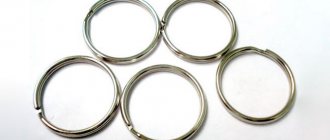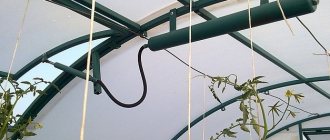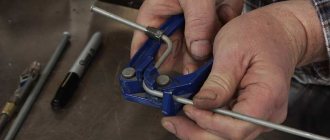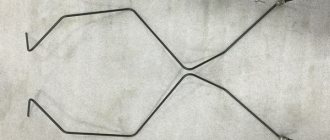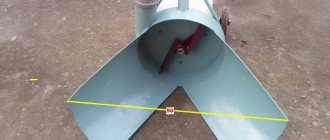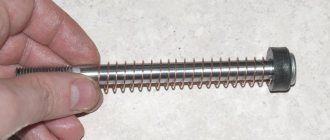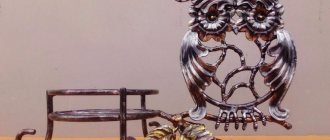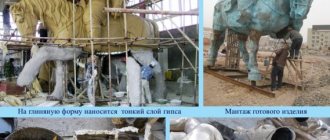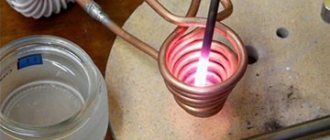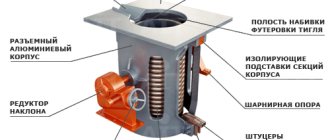A stove for a cauldron is an essential component of country life. Dishes in a cauldron are prepared according to the same principle as in a Russian oven: the temperature gradually decreases, and the food simmers under the influence of low-intensity heat. This design can be bought or welded (this is a variation on the theme of a tripod over a fire, and it’s not difficult). Building it out of brick is also a solvable task; at FORUMHOUSE, it was successfully completed by people who had never held a mason’s trowel in their hands before. All the details are in our article.
Peculiarities
What kind of stove should be for a cauldron? It is immediately worth noting that it is not distinguished by the complexity of its design and you can build it with your own efforts, if you have the desire and some skills in working with the tool.
Externally, the stove resembles a barbecue, but it is made round, because the cauldron has a similar shape. Traditionally, a cauldron is used for cooking over an open fire. That is why when designing a stove it is necessary to take this feature into account.
The best option would be a design that has removable legs. It is very important that the structure is mobile, because in this case you can take it with you when going out into nature or move it around the site, put it in a garage or shed for storage.
The oven, designed for preparing culinary delights in a cauldron, resembles a cylinder from the side. The base should be supported by massive legs so that they can support the weight of the cauldron with food in it.
The bottom is made at the bottom of the cylinder, while the top always remains open. After all, as already noted, culinary masterpieces in a cauldron are prepared only over an open flame. Some people decide to complete the stove design with a chimney, but this is not a prerequisite.
When cooking food on such a stove, thermal energy is used economically, because the flame is reliably protected from the wind. In such a stove, the boiler warms up much faster than on an open fire.
How to make a stove from gas cylinders?
A fireplace for heating a cauldron made from a gas cylinder is a portable device that can be installed in any convenient place and can even be used in camping conditions. To make it you will need the following materials:
- gas cylinder;
- fittings;
- grate;
- Door hinges;
- other related materials.
In the process of assembling a stove from a cylinder, the following consumables will be used:
- cutting discs for grinders;
- grinding wheels for angle grinders;
- sandpaper;
- drill;
- welding electrodes.
Minimum set of required tools:
- welding machine;
- Bulgarian;
- electric drill;
- hammer;
- measuring instruments (tape measure or ruler);
- other related tools.
The gas cylinder is installed on its base. At a distance of 60-70 cm from its lower part, a mark is placed indicating the location of the cut. A circular line is drawn through the mark
It is important that it is drawn strictly parallel to the surface on which the cylinder is installed. Along this line, using a grinder and a cutting wheel, the balloon wall is cut
The top sawn part is removed.
Vertical triangular cuts are made in the cutting edge of the cylinder. Their number and depth are determined by the individual design of the future furnace. These cutouts are necessary to maintain stable draft after installing the cauldron on the stove. The absence of draft holes will create a vacuum inside the oven, causing the flame to go out. A rectangle is marked on the side wall of the cylinder. Sawing is performed along the contour line of the rectangle. The resulting hole will serve as the entrance part of the future firebox, and the cut piece will serve as the stove door.
A rectangular section of the cylinder wall is welded to its original place using hinge hinges. On the side of the combustion hole opposite the hinges, a piece of metal is welded from the inside.
Its location should be such that it prevents the door from opening into the cylinder and at the same time does not interfere with loading firewood into the firebox. For convenience, a handle is welded to the surface of the door, which can be made from fittings. In order for the door to close securely, a movable valve is equipped on its edge adjacent to the cylinder body.
Below the main hole, a hole for the blower is cut out. Its width should correspond to the width of the firebox opening, and its height should not exceed 10 cm. The rectangle of metal obtained after the cutout is used to construct a door, which helps regulate the amount of oxygen entering the firebox.
A grate is installed between the combustion door and the blower - a grate that prevents fuel material from entering the ash collector. To arrange a grate inside a round furnace, you can use reinforcing rods, the length of which will vary depending on the round shape of the internal space of the balloon furnace.
To install a grate, it is better to use reinforcement with a diameter of at least 20 mm. This is explained by the presence of high temperatures inside the oven at the time of its heating. Reinforcement with a smaller diameter can quickly burn out.
At a distance of 15-20 cm from the upper edge of the stove, U-shaped handles are welded, with the help of which this stove can be transported. These handles are made from reinforcement with a diameter of 12 mm. To ensure the stability of the balloon furnace, special spacers can be welded to its lower part. The number of spacers is determined individually, depending on the operating conditions and the size of the cauldron that will be installed on the hearth.
A stove for a cauldron, made with your own hands from a cylinder, is a multifunctional device. It can be installed in the country house, and with some modifications it can be used as a barbecue on which you can fry meat. A balloon stove can be used as a heating stove installed in a garage or some other utility room.
429954a20277025c961a0a6075d9403c.jpe
Types of furnaces
Before you start making a stand for a cauldron with your own hands, you should familiarize yourself with the possible options. They vary depending on different characteristics.
Depending on the appropriate option, it will be possible to decide which stove is needed and then it will be possible to begin its manufacture.
Operating principle of a potbelly stove
A potbelly stove is a primitive version of a metal wood-burning stove. This device works extremely simply: firewood is placed in the firebox, it burns, the stove body heats up and gives off heat to the surrounding air. Smoke gases are removed through the chimney, and the ash is poured through the grate into the ash pan, which should be cleaned periodically.
One of the main advantages of a potbelly stove is its simplicity of design. There are no strict dimensions here, the main thing is that the body can withstand heat and the chimney works properly. An experienced craftsman will make such a stove in just a couple of hours. And you can burn almost any dry wood in it: logs and sawdust. On our website there is an article with a detailed description of the process of making a potbelly stove with your own hands.
A potbelly stove is also heated with other flammable materials: diesel fuel, coal, peat, household waste, etc. If desired, you can cook quite successfully on such a stove. This point should be considered before the construction begins in order to create a smooth cooking surface.
A potbelly stove is a combustion chamber made of thick metal with a loading door, a chimney, a grate and an ash pit. You can use an old gas cylinder as a housing
But one should also take into account the disadvantages of such a heating solution. For starters, there is a high risk of burns and fires.
For the potbelly stove you need to choose a special place, decorated with fire-resistant materials. It is advisable for it to stand to the side, where no one will accidentally touch the body and get burned.
If desired, the upper part of a vertical potbelly stove from an old gas cylinder can be turned into a modest-sized hob
Such a metal structure weighs a lot, so we are not talking about any mobility of the device. It will be difficult to move a potbelly stove to heat different rooms.
Such stoves are usually used to heat utility rooms where there is no electricity or where it is supplied intermittently: garage, barn, workshop, etc.
From two gas cylinders connected perpendicularly, you can make an improved version of the potbelly stove, which allows you to retain more heat and get high efficiency when burning fuel
Another problem is low efficiency, since part of the thermal energy during the combustion of wood literally flies out into the chimney. There are various ways to retain heat and modify your stove slightly to make it work more efficiently.
Finally, you need to take care of good ventilation of the room in which the potbelly stove is installed, since such a device burns a large amount of oxygen during operation.
So, a potbelly stove consists of a metal body, the role of which is usually “invited” to be an old gas cylinder. It is necessary to make two doors in the case: large and small. The first serves to load fuel, the second is needed as a blower, through which air enters from the combustion chamber to ensure the combustion process and draft.
A drawing of a stove-stove from a gas cylinder allows you to make a device with specific parameters and calculated power, but such accuracy is not required
Below, at some distance from the bottom of the structure, a grate should be welded. It can be made from thick wire or simply take a sheet of thick metal and cut long slits in it. The distance between the grate rods should be such that the combustion material does not spill down into the ash pan.
If the potbelly stove will be heated only with wood, the gaps of the grate are made larger, but when it is intended to use wood chips, the grate should be made more frequent.
A curved metal chimney installed on a potbelly stove made from a gas cylinder allows you to retain more heat in the room and increase the efficiency of the structure
The ash box can be welded from sheet metal or take a ready-made metal container of a suitable size and resistant to strong heat. Some people prefer to do without an ash pan altogether, simply scooping out the ash from the lower section as needed, although this is not very convenient. As a rule, the chimney for a potbelly stove is oriented upward to provide the necessary draft.
The standard design of a gas cylinder stove can be modified to increase productivity by turning a solid fuel heater into a heater or hob:
Image gallery
Photo from
Fixed to body
Attaching heating pipes to the cylinder
Air heating unit
Devices for heating food
What are they made of?
Depending on what material is used in the manufacture of the structure, the following options can be distinguished:
- Metal. They can be either factory-made or home-made.
- Stationary brick structures. They come in different types depending on the method of installing the cauldron; these are the classic and modified versions.
For some, the first option is the best, but for others, the brick options are ideal.
Product made from wheel rims
Aesthetics are not always important in stove design. There are cases when the bet is made only on the functionality of the device. An example of folk art is a device consisting of two wheels. The disc septum is usually shifted to one side. The lower disk is positioned so that its partition is as low as possible. At the top disk it is completely removed.
933be4d84c9335b98f4b033ec62920bd.jpe
Cut disc part
The discs are aligned coaxially and connected by welding. The lower partition plays the role of a grate. The cavity of the two disks is the firebox. All that remains is to cut a hole in the side for the door, weld the handles and legs, and you can use the homemade device.
Simple and clear design
Classification by cooking method
There is a certain classification of ovens depending on the available options for cooking food on them:
- Specialized. They are only suitable for using a cauldron.
- Universal. They are multifunctional and can be used when preparing food in cauldrons and when using other devices, for example, grates, portable smokehouses, etc.
The choice of a specific design is determined not only by personal preferences, but also by the intended cooking features.
How to use it correctly?
You should not immediately start cooking pilaf on a new device. First you need to burn off the remaining oil from the steel. If an old water pipe was used, all internal surfaces are cleaned with a metal brush to bare metal. Then the oven is washed with water.
Now you can lay the first stack of firewood and heat the stove. During the first “start-up”, firewood can be loaded through the top. Subsequently, they are placed through the door. After thoroughly calcining the pipe, remove the slag and remaining wood from the stove.
Now you can start cooking pilaf on a homemade stove. Firewood is placed along the upper edge of the door and ignited. Now they should burn out a little and only then put the cauldron on the stove.
Expert opinion
Pavel Kruglov
Stove maker with 25 years of experience
It is better to cook food over coals, periodically adding firewood when the temperature drops. In this case, the food will not burn, and the meat will be juicy. Do not move a hot oven. It's best to wait until it cools down before cleaning and moving it. Ashes are removed from the oven after each cooking.
Car disassembly for the stove
A stove for a cauldron can be assembled with your own hands from disks from a car. This is a very interesting option, made from what you have in the garage.
To create a small stove, old wheels from passenger cars are used. It is necessary to understand that such a stove with a cauldron is massive and heavy, but, despite all of the above, the metal does not burn out for a long time.
Fire safety requirements
Brick stoves do not use open fire.
A brick brazier is considered a fire-safe object, since it does not use an open flame.
However, during its construction and operation the following rules must be observed:
- do not place near flammable objects;
- not located above underground utilities, which may subsequently complicate their repair;
- Do not use volatile compounds for ignition.
Do not leave objects on the stove that could catch fire due to heat.
Sunny option
If possible, you can make a fireplace for a solar cauldron with your own hands. This model is very convenient and efficient to use.
To make it, it is enough to find cardboard, which should be covered with aluminum foil, it can be ordinary baking foil. Please note that metallized plastic is not suitable in this case, since this material is not dense enough.
Note!
- DIY garden paths - varieties of materials. Step-by-step instructions for DIY installation and decoration
Do-it-yourself sauna stove: types of structures and manufacturing materials, technology and stages of work + do-it-yourself construction instructions
- Do-it-yourself shower stall: types of structures, choice of manufacturing and finishing materials, step-by-step instructions for DIY construction
To assemble a stove for a cauldron with your own hands, you will need to transfer the drawings to the material from which it will be made. Assembling the model is extremely simple, the main thing is to find a good drawing.
What is a cauldron
Oven for a cauldron made from car wheels
A cauldron is a container made of cast iron or aluminum, the bottom area of which has the shape of a hemisphere. This structure allows you to lower the boiler directly into the fireplace, achieving uniform heating of the contents. You can also cook food in a small cauldron at home on a stove using a stand. Large containers over 10 liters require an outdoor oven. You can make the structure stationary or move it from place to place. An old, worn-out metal stove can be lined with brick.
The thickness of the walls of the cauldron depends on the material used. If lightweight aluminum is used, they are made thick (about 1 cm). A cast iron product can be made thin-walled (3-4 mm).
Kazan paired with tandoor
By deciding to combine a cauldron with a tandoor, you can get a very good stove. Such stoves are even available for sale. When purchasing a tandoor, you can equip it with a boiler, as well as stands for it.
If you have a tandoor, but you can’t buy stands for the boiler, you can build them yourself.
To do this, you will need strong iron reinforcement, from which you will first need to build a base; for this, the material bends around the tandoor and is firmly fixed. Next, the legs for the cauldron are made.
Tools
What you can't do without:
- Welding machine and accessories for it;
- Grinder (angle grinder);
- Drill.
It is better to buy all the iron not at a metal warehouse, but to find scraps or used ones. You will definitely not find a piece of large diameter pipe at a metal warehouse. You can search at scrap metal collection points or on online sites.
We will need:
- 0.45-0.5 m of pipe with a diameter of 300 mm and a wall of at least 4 mm;
- 0.7-0.8 m of pipe (profile or regular) for each leg, for all – 2.1-2.4 m;
- Sheet 4 mm 300*300 mm, for the grate (you can weld the grate from 6-8 mm reinforcement, but this will take longer).
Stationary oven option
It is quite possible to make a stationary model of the furnace on your site. Brick is used in its manufacture. In this case, there is no need to rush; it is very important to calculate all the stages, because the oven is done once and for a long time.
The first step is to determine the dimensions of the future structure. The location should be near the house; it would be excellent to place such a stove near the gazebo, if there is one on the site. It is worth considering the availability of space for storing firewood.
Stationary version
In order to assemble the structure, you will certainly need to do the following:
- Firebox, firewood is loaded into it.
- Bulgarian.
- Combustion chamber, which is made of refractory brick.
- Grate. It is through this element that air is supplied to the lower part of the firebox.
- Ash pit. This is a retractable baking tray that is placed under the grate, where the largest accumulation of ash is.
- Doors.
- A chimney through which carbon monoxide will be discharged.
- You will also need to make special holes for the free passage of the flame. These are called burnouts and are performed on the side of the oven.
- Metal corners for framing.
- To cover the upper part, a special steel plate with a thickness of at least two centimeters is used.
- Fireproof bricks, cement mixture.
Once all the necessary materials have been prepared and the stages of work have been thought out, you can safely begin assembling the stove.
Assembly Procedure and Step-by-Step Guide
Before you begin processing a body made of a thick-walled metal pipe, you need to determine the height of the structure.
The usual height of a dining table and the working surface of a gas stove is 90-100 cm. If you take a shorter piece of pipe, the cauldron will be installed lower, which means that you will have to work with your back bent. It is also not worth making a structure that is too high; when the boiling oil is at a height, you will have to rise on tiptoe to stir the dish, which is even more inconvenient than bending your back. Therefore, the recommended height of the boiler lid level is 90-95 cm. In order for the structure to be stable, it is necessary to weld plates at the bottom on the inside and outside to increase the support area. In this case, it is recommended to place the bottom at a distance of 5 cm above the legs. The firebox door and the vent are made on one side of the stove, this is both more convenient and simpler than making cutouts on different sides. The grate is installed at least 7 cm below the bottom edge of the firebox door. This is done this way so that the burning wood does not fall out of the firebox when the door is opened. The installation point of the chimney should be opposite the firebox door, while the place where the chimney is inserted into the body and the top side of the door should be separated by at least 5 cm in height.
Now that the main points are clear, the algorithm of operation can be presented as follows:
- Measurements are taken of the pipe section and the correctness of the cuts on both sides is checked;
- If necessary, the top and bottom of the segment are aligned;
- Using chalk or a white marker, the body is marked, the areas of metal that need to be removed are highlighted, and marks are made where elements will be welded from inside the pipe;
- A window is cut out for the firebox door and for the vent door. The area of the plenum door should be no more than 30% of the area of the firebox door.
- The cut elements are processed and prepared for installation as doors;
- A line is drawn on the inside of the body for installing the grate. A ring is bent from reinforcement with a diameter of 8-10 mm and welded along the indicated line;
- A circle for the bottom of the oven is cut out of sheet metal. The wheel is processed with an abrasive wheel and adjusted as accurately as possible to the diameter of the body. After this, it is installed in place and boiled on both sides - from the side of the firebox and from the side of the legs.
- Hinges are installed on the doors.
- Plates from a strip 2-3 mm thick are additionally welded onto the firebox door from the inside of the body. This is done in order to ensure a tight fit of the door itself to the oven body.
- In the upper part of the body, triangular cutouts are made along the entire circumference, 30-40 mm deep and 50 mm wide. This is necessary for better fixation of the cauldron on the stove body.
- Stepping back 10-12 cm from the top edge on the opposite side of the firebox doors, insert the chimney pipe at an angle of 60 degrees. The length of the segment protruding beyond the body should be 15-20cm.
- 4 holes with a diameter of 10 mm are drilled on the firebox door, in the corners at a distance of 15-20 mm from the edges of the door. An additional thick metal screen is attached to the door on the inside. This is necessary so that when opening the coals do not spill out of the firebox, and the door itself does not get too hot.
- The stove grate is made from fittings with a diameter of 16-24 mm. The distance between the reinforcement bars should be no more than 10 mm. The rods are connected from the bottom with 3 crossbars - in the center with the longest jumper and two equal ones on the sides.
- It is better to make the constipations from sheet steel 1.5-2 mm thick; the constipations must be strong and reliable; it is even better that the sheet plate is spring-loaded.
After assembling the entire structure, to give it an attractive appearance, it is recommended to clean the entire surface using a grinder with a wire brush and prepare it for painting with heat-resistant paint.
The first fire after painting should be done without cooking in a cauldron; heat-resistant paint bakes when heated, emitting an unpleasant odor, so it is recommended to avoid cooking for the first time.
As can be seen from the description, a stove for a cauldron made from a pipe can be assembled even by novice craftsmen, especially since during use, ideas for further improvement will appear, for example, installing additional removable surfaces similar to the work surface in the kitchen
You will probably have to pay attention to the chimney, equipping it with a deflector and a spark arrester. To make it easier to carry the stove, you can also consider the option of placing transport wheels so that the entire structure can be easily transported by one person
Furnace assembly algorithm
Usually the height of the furnace does not exceed eighty centimeters, so the foundation need not be made. The site should be leveled and metal formwork made. For these purposes, ten-centimeter reinforcement can be used. When the formwork is prepared, everything needs to be filled with concrete.
It is important that the base is level; it should be checked using a building level; there should be no distortions.
The height of the platform is usually up to ten centimeters. The assembly of the stove itself is often entrusted to specialists; as a rule, this work is not expensive. But if you wish, you can assemble the oven yourself.
Brickwork can be done in some variations. Here you will need to study the features of its implementation, you can consult with a specialist.
If you are not confident in your abilities, it is better to enlist the help of a stove laying specialist. After all, the materials used are not cheap, and it will not be possible to re-arrange the structure without financial losses in case of incorrect actions.
It is also worth making a support, it can be a stand for a cauldron with your own hands, thanks to which the preparation of culinary masterpieces will be much more convenient.
Photos of various products
Before we get started, I suggest you look at photographs of products that can be made. There is no limit to the imagination of the authors: you can make a wide variety of designs to suit every taste and complexity. Estimate your strengths and real needs, only after that is it worth purchasing material.
